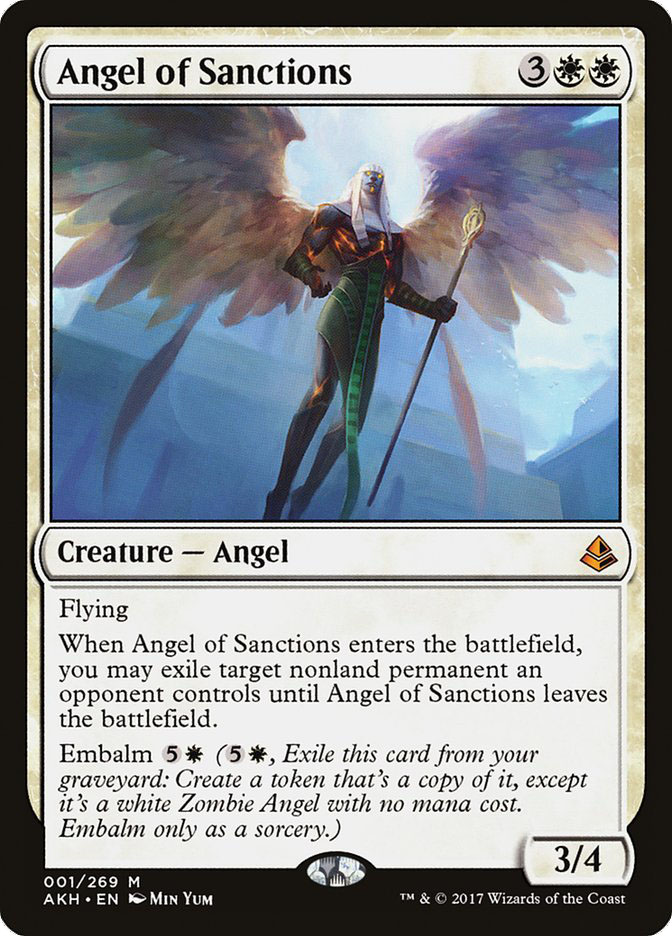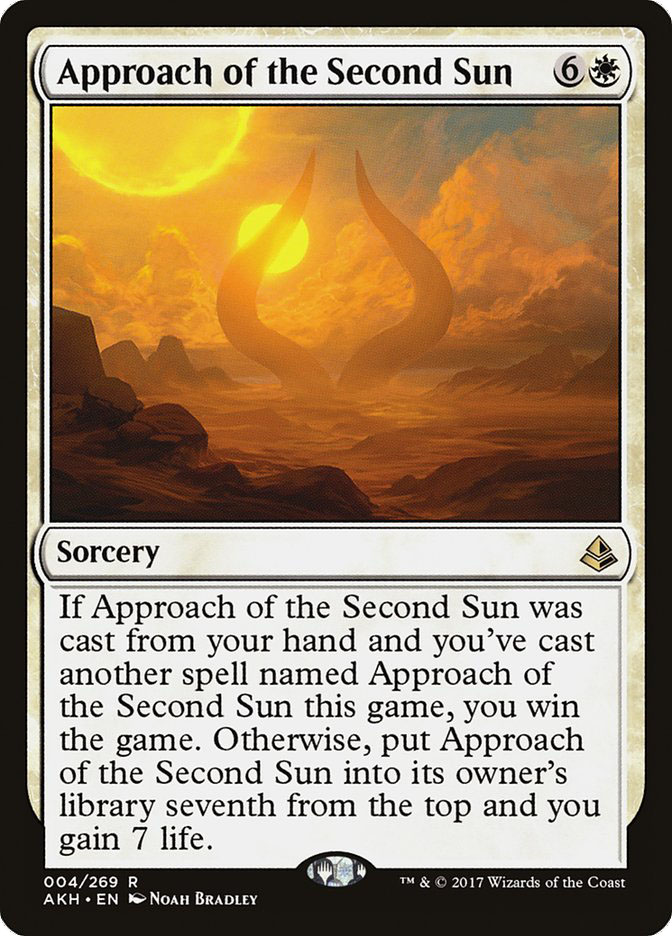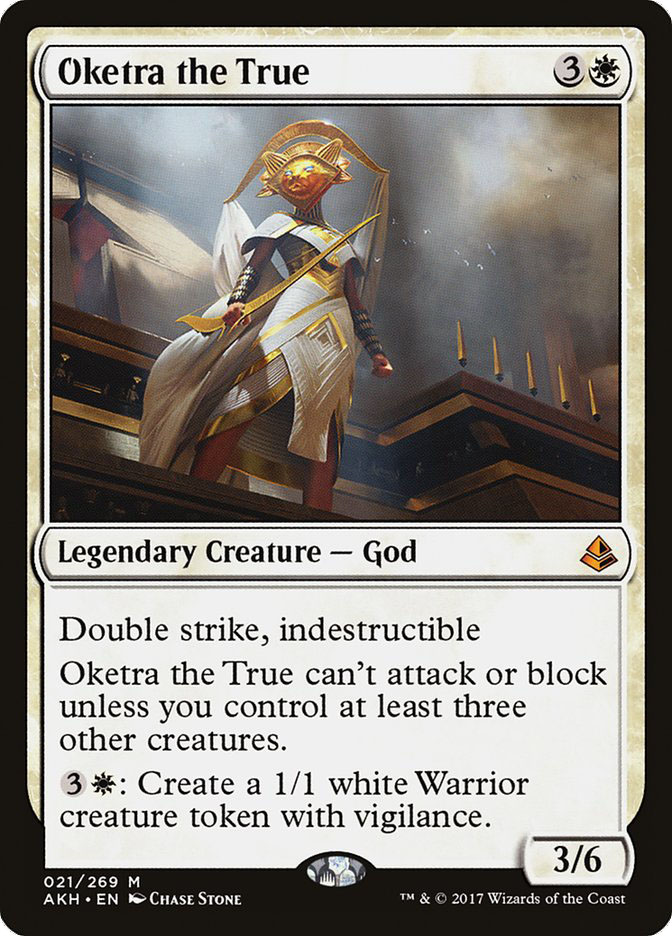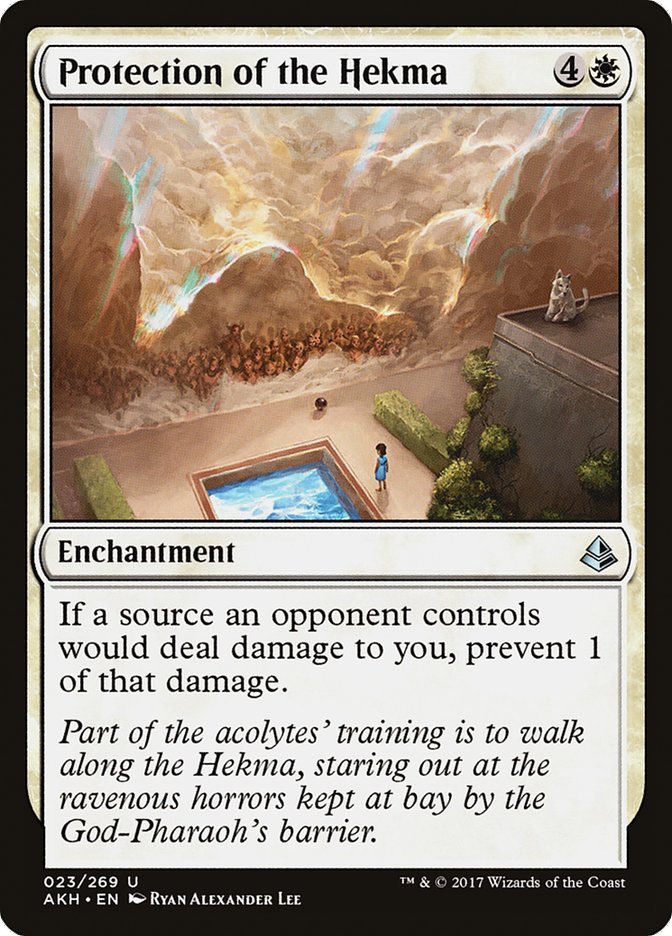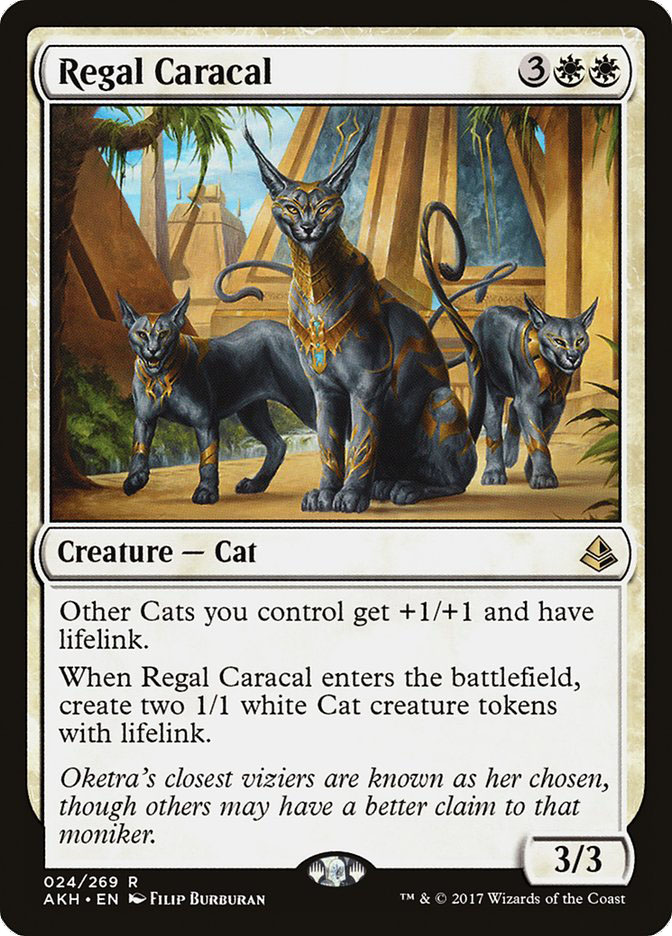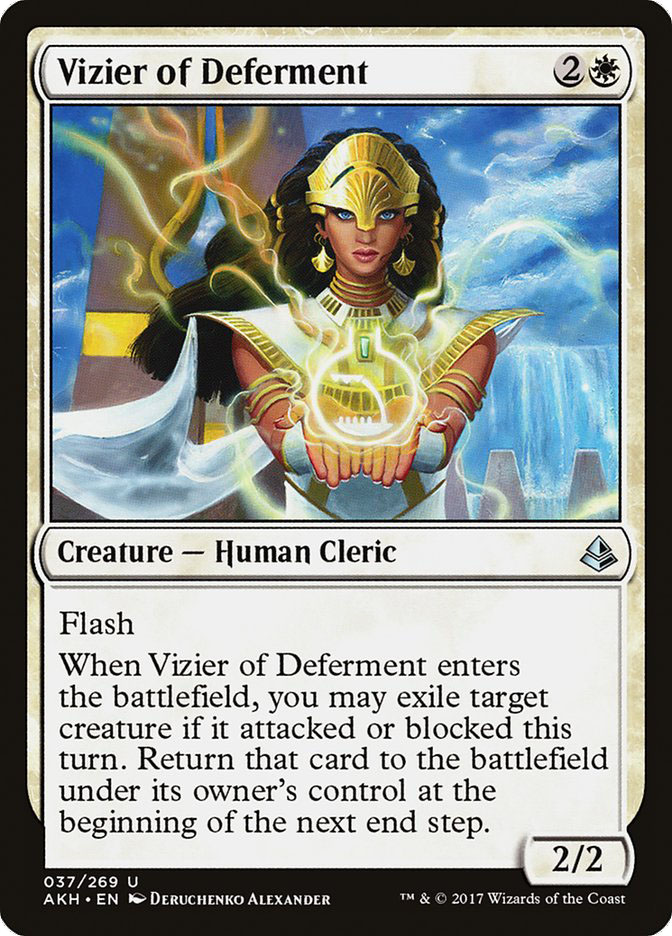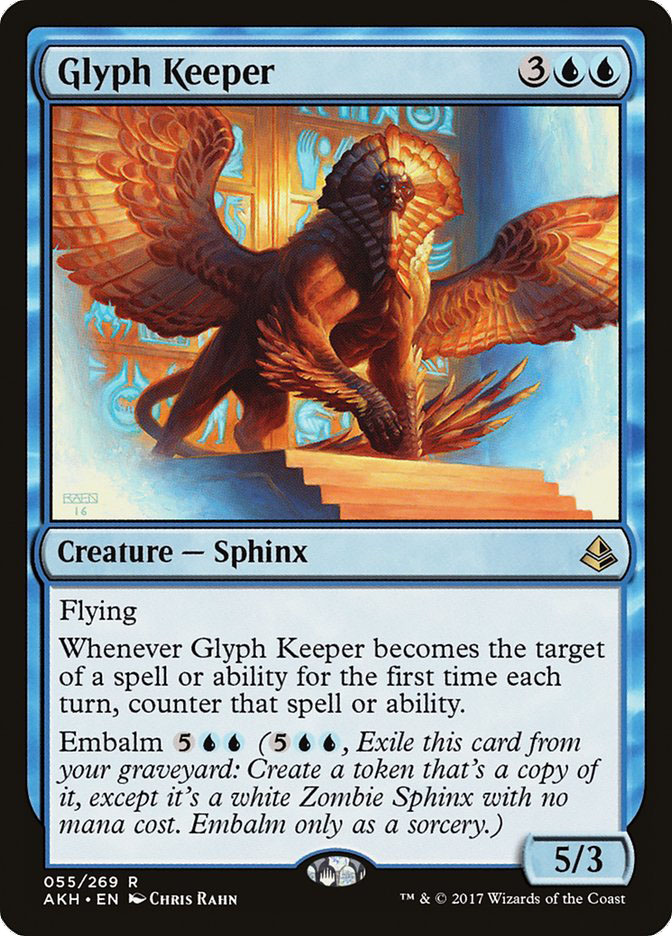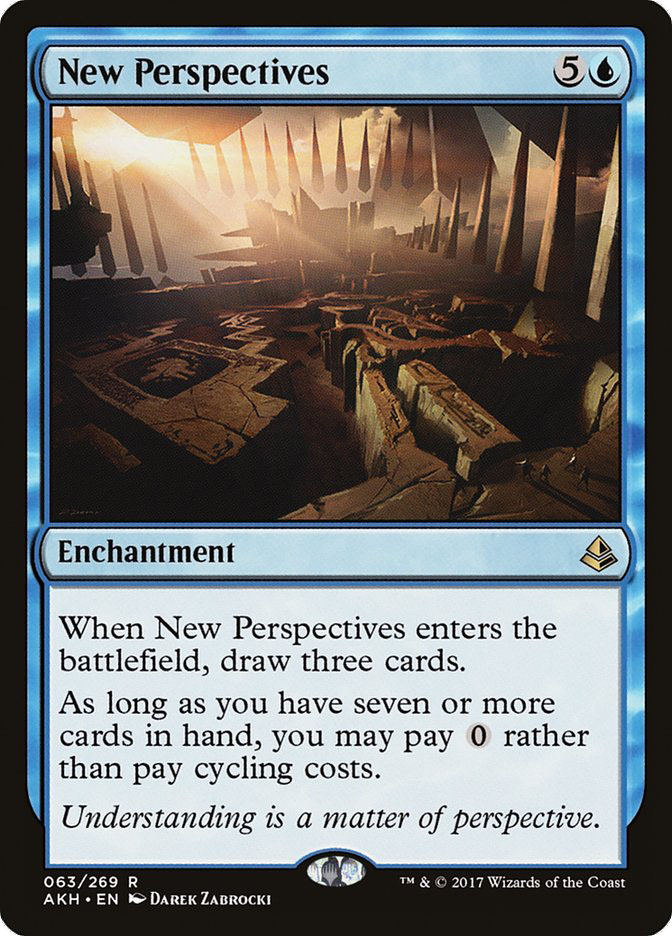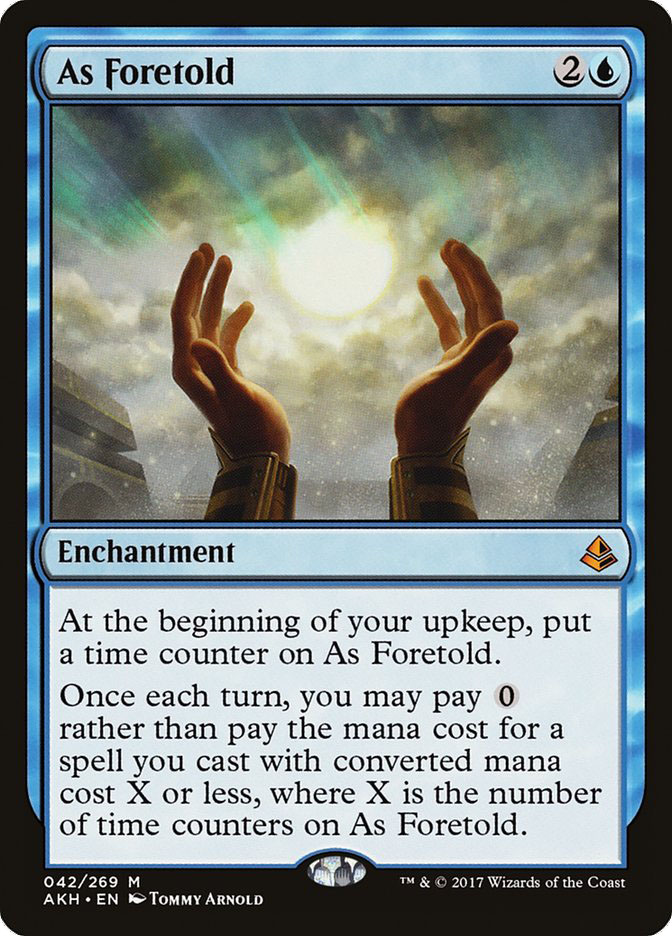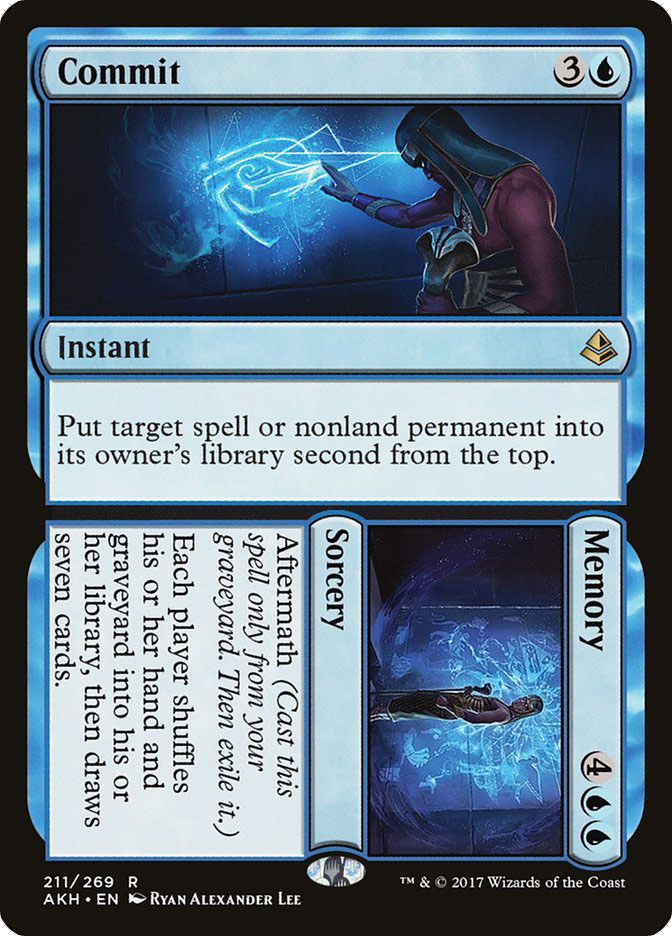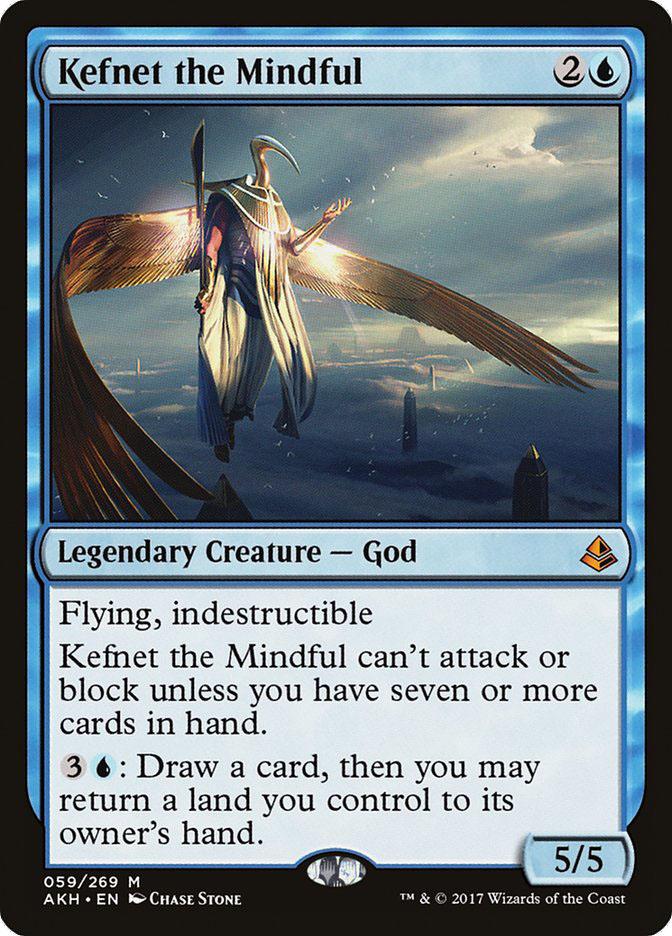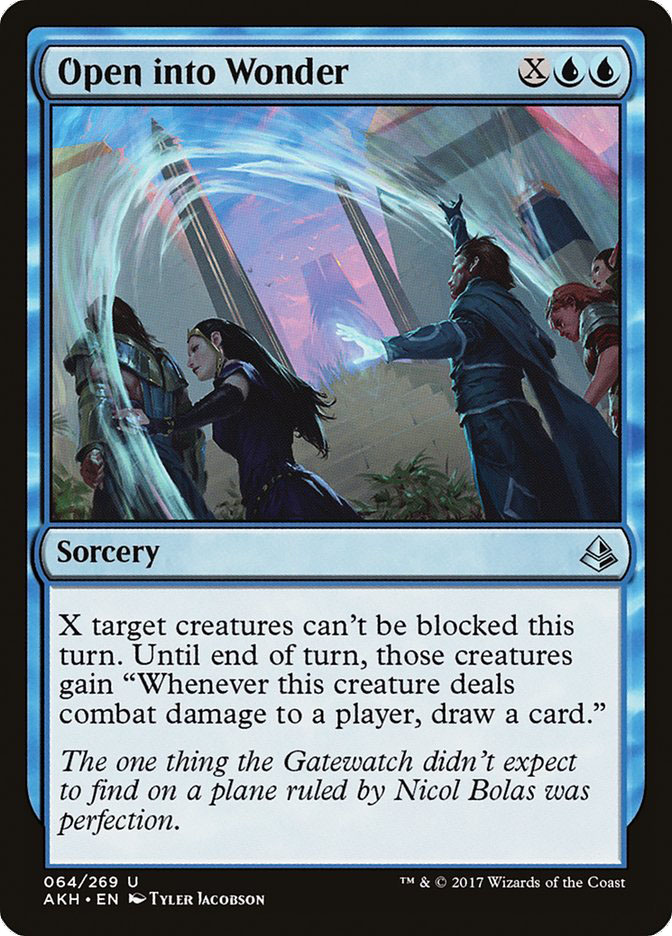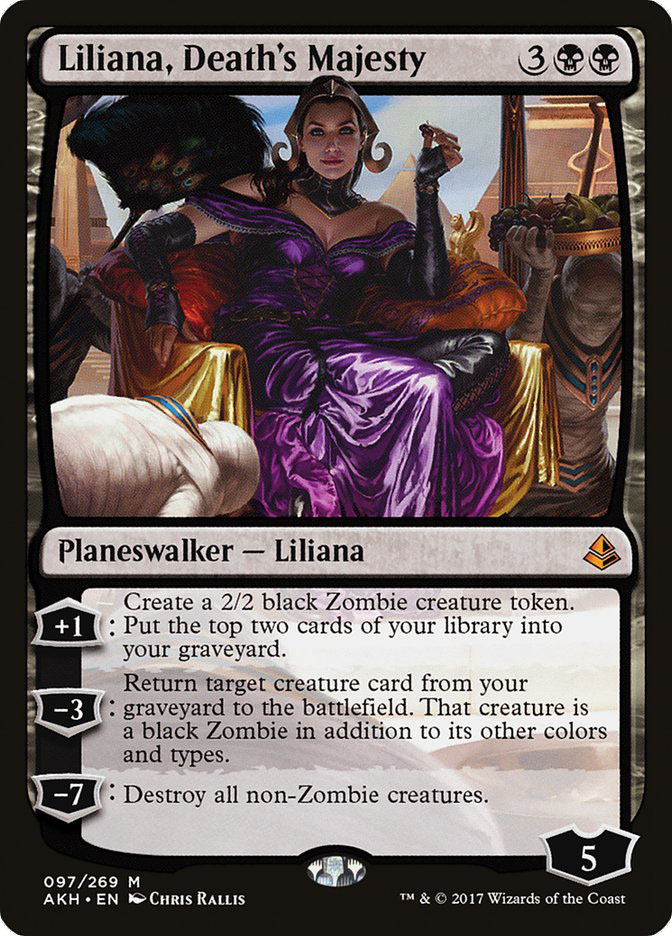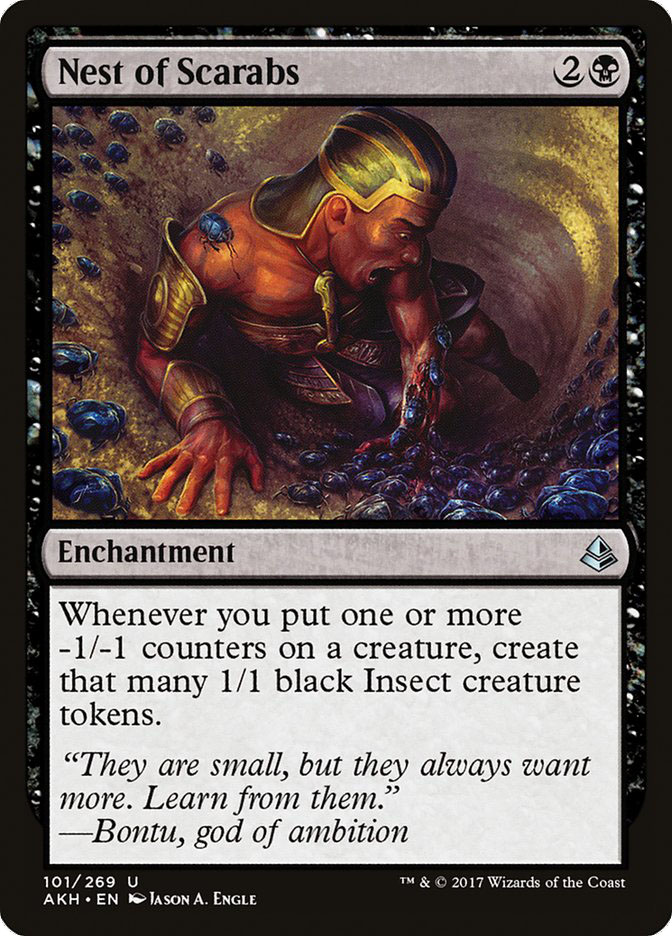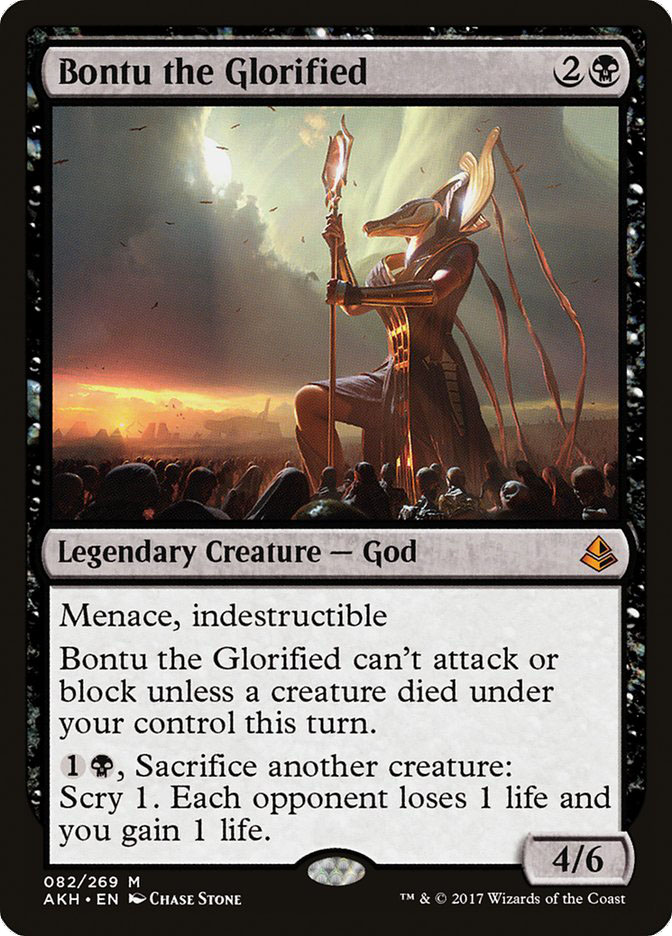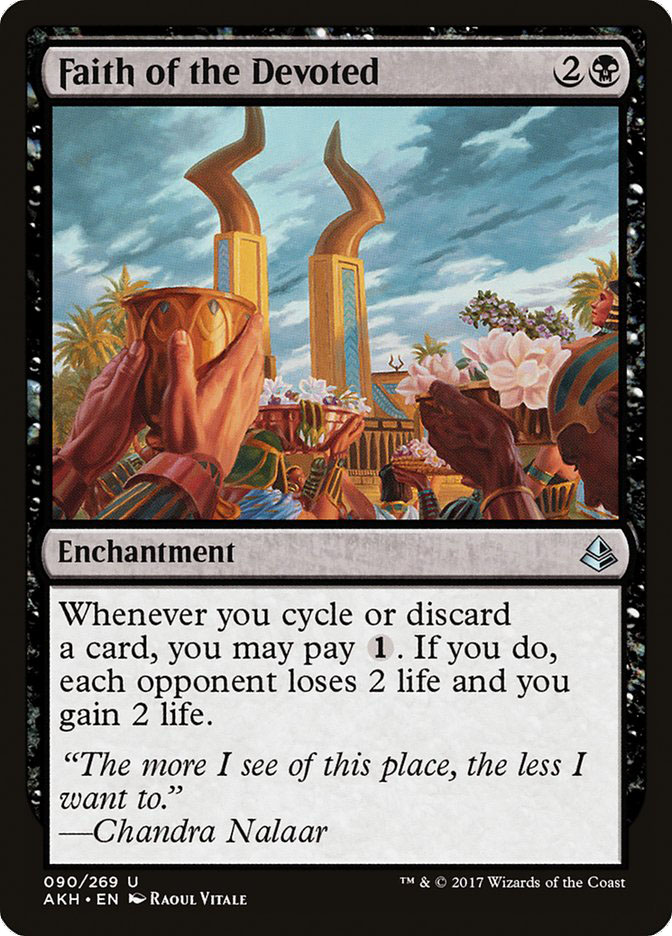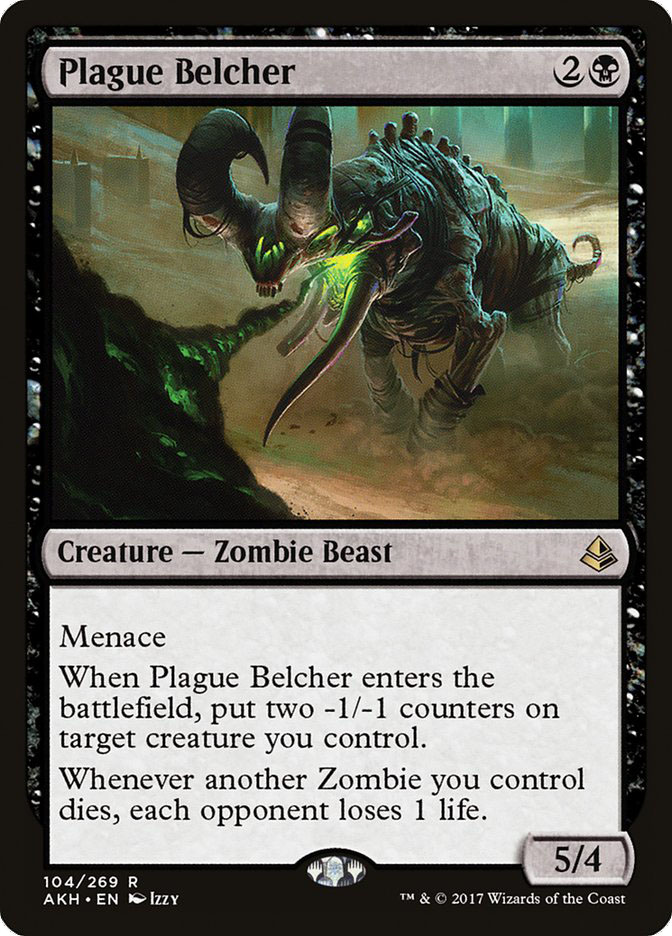If you’re not excited about Amonkhet, then you might not be able to get excited about Magic. Here’s how elated I am about the set: a single piece can’t contain my excitement, so I’ll offer you my review in two parts. A brilliant marriage of world building and mechanics, Amonkhet brings something powerful for fans of every format. Of course, we’re going to focus on Commander.
I’ll break down each color and then offer what I find to be the best of the best, as well as an overall grade for the color. As with every set review, I’ll offer you the caveat that there are some cards we’ll talk about today which might be houses in other formats which get dismissed in this one. Let’s get straight to it.
White
Angel of Sanctions: A reasonable addition to your Angel tribal as well as a bit player in other white decks, the power of Angel of Sanctions is that you get to do it twice. My suggestion is to use the ability on a giant token of someone else’s.
Anointed Procession: Obviously, the dream here is with Storm Herd, but you’re going to have plenty of less janky uses for what I suspect will become a powerhouse in the format. From Ghave, Guru of Spores to Rhys the Redeemed to Rith, the Awakener, we’re going to see lots more tokens. The super not-so-secret tech is that it’s not just token creatures but all tokens, so feel free to double up on your Clues as well.
Anointer Priest: Paired with Anointed Procession and the aforementioned Storm Herd, triple your life total.
Approach of the Second Sun: As I said last week, there’s no reason to panic over the card. For one, it’s a fourteen-mana investment plus some way to get it back earlier than the seventh draw down the line. It seems like one of those game-deflating things that people will play once just in order to say they did it, and then move on. Obviously, if we see the card becoming problematic, we’ll take action.
Cast Out: Like Angel of Sanctions, I notice that Cast Out can only target a permanent an opponent controls, meaning you can’t use it as a safety net like you might with Oblivion Ring. Adding only one more mana for the cycling part is well worth it, although this seems like one of those cards that you only cycle early in the game because you’re definitely going to have juicy targets later (unless, of course, you’re doing a whole cycling thing).
Devoted Crop-Mate: I wonder if it was “power 2 or less” in design before someone realized that might be too good.
Forsake the Worldly: I look at Forsake the Worldly this way: it costs one more than Disenchant and exiles instead of destroys, plus it has cycling. One more mana well spent.
Gideon of the Trials: What’s certainly going to be a chase card in Standard, this Gideon—like others—isn’t going to have a significant impact on Commander.
Gideon’s Intervention: The reason this is likely to get played is that it affects all opponents; you can be all “Gotcha, only I get Solemn Simulacrum!”
Oketra the True: The drawback doesn’t seem like much of a drawback, especially since Oketra can create friends. It’s going in your decks with Hero of Bladehold and other swarms of attackers. If you just have Oketra and Hero of Bladehold, Oketra can’t attack, since the Soldiers which Hero creates aren’t on the battlefield when you’re declaring attackers.
Seraph of the Suns: Indestructible always gets my attention, although for seven mana, I think I want this to be a 5/5.
Trial of Solidarity: I like the whole Trial/Cartouche thing. It’s one of the great design points of the set, creating that integration of mechanics and worldbuilding which I mentioned. This particular card is okay, but what it represents is wonderful.
Vizier of Remedies: Okay, so it’s not Melira, Sylvok Outcast, but in a set in which you might be forced to put -1/-1 counters on creatures you control in order for some cool stuff to happen, Vizier of Remedies is strong. It’s also strong with Persist, since one minus one is zero. With a zero-mana sacrifice outlet, like Phyrexian Altar or Goblin Bombardment, many arbitrarily large combos become available. Or even without a sacrifice outlet, such as with Devoted Druid. Unlike Melira, Sylvok Outcast, which prevented you from paying the activation cost of Devoted Druid, with Vizier of Remedies, you pay it, but what happens to the counter changes.
Dusk//Dawn: Just by itself, Dusk is a reasonable element in your token swarm decks (although most of them like to make the 1/1s huge with cards like Cathars’ Crusade). I see the utility of Dawn more in the light of just putting good utility creatures back into your hand (especially Clone) than any kind of combo use.
Top 3
This is one of those cards which is just way stronger than it looks. Sure, you can’t use this like Urza’s Armor and Pestilence your way to insanity, but Protection of the Hekma will certainly keep the little swarms off of your face and most importantly, just change the combat math in your favor. It made me think immediately of Lashknife Barrier, a very strong hidden gem.
Cat tribal! Internet memes have finally influenced Magic. I’m so excited about Cats, I don’t even know where to start. Unfortunately, your choice for a commander outside of mono-white is Jedit Ojanen, which came along when creatures weren’t so good. I’d probably start with Brimaz, King of Oreskos and go from there, but there’s an argument for Raksha Golden Cub. As a PSA, I used my access as a student to check the Oxford English Dictionary for the correct pronunciation, which is /ˈkɛrəkæl/.
There’s a world of difference between “target attacking or blocking creature” and “if it attacked or blocked this turn.” The first one only applies during combat, because that’s the only time that a creature is currently attacking or blocking—and don’t forget that still applies during the end of combat step. Vizier of Deferment only looks into the past, although that past can be just a second ago when the creature attacked or blocked.
The card certainly has uses during combat. It can get rid of a scary attacker (especially one with lots of counters on it like Kresh, the Bloodbraided). It can change the amount of damage a creature with trample will do. In a multiplayer format, the strength of it might be in getting an attack out of one of your creatures, then blinking it with Vizier of Deferment so that it’s available to you on defense. It obviously also goes into your blink deck with all the cool enters-the-battlefield triggers plus Panharmonicon. An extremely strong, flexible card for very little mana, it’s in the running for my favorite in the set.
Grade: A. Depth, flexibility, strength, utility, and just raw goodness.
Blue
As Foretold: It’s pretty narrow and the game has to go quite a few turns before As Foretold has loads of value for you. If your games commonly go past turn 10, it’s probably worthwhile.
Cartouche of Knowledge: Stepping up the Cartouche/Trial pairing, you can go with Floodtide Serpent or Riptide Chimera to keep putting the Cartouches back in your hand, or even the Trials if you can’t find the Cartouche.
Curator of Mysteries: Free scrying in an affordable package, it’s still not the cheapest of the Sphynges. That honor goes to the three-mana Vexing Sphinx.
Drake Haven: Put some looting into your Talrand, the Sky Summoner deck for double the Drakes. There’s clearly a Fluctuator not far behind.
Glyph Keeper: Unfortunately, the ability applies to you as well, so you can’t enchant it unless you do something else first. You can still equip; you just have to pay double.
Hieroglyphic Illumination: Good if you’re on the cycling plan, and reasonable even if you’re not. At the same mana cost, I like Glimmer of Genius more.
Naga Oracle: The flexibility of self-milling exactly the things you want in your graveyard and nothing else makes Naga Oracle better than some of its predecessors.
New Perspectives: Not quite inexpensive enough on its own to just cast and bounce for continual card draw, the focus of New Perspectives is that it’s Fluctuator with a bonus. We’ve seen before how cycling for no mana can quickly lead to insanity. Now that we have The Gitrog Monster and Sidisi, Brood Tyrant, said craziness will step up a notch. That’s right—when you cycle a land such as Slippery Karst, when you have The Gitrog Monster on the battlefield, you draw two cards.
Pull from Tomorrow: Big draw spell as an instant. You’re either putting something into the graveyard that you want there, or you’ve drawn so much that you don’t care about getting rid of one. What’s most special about this card as opposed to Stroke of Genius, Braingeyser, and even Blue Sun’s Zenith, is that it’s not targeted. Sure, you can’t kill anyone with it, but no one can Willbender it to themselves, either.
Scribe of the Mindful: Useful in the kind of deck in which you want creatures going to the graveyard, putting the card back into your hand as an activated ability gives you more options than a card like Mnemonic Wall, since you have to choose the card right away.
Trial of Knowledge: In addition to the interaction with Cartouches, you can run the same tricks with Floodtide Serpent and friends as I suggested with Cartouche of Knowledge.
Vizier of Many Faces: Vizier of Many Faces joins Stunt Double and Gigantoplasm in driving additional daggers into the already-stiff corpse of Clone.
Top 3
Great Venser’s Ghost! Commit is another spell which offers you great flexibility in deciding what you want or need to do with it. Unlike Venser, Shaper Savant, Commit puts the spell back into the library, so even if the opponent has mana to cast it again, they have to wait to draw it. Add on top of that the Memory Wheel, and you have a top-shelf card. The hits keep coming.
I’ve seen lots of negative chatter about this card, and I can’t fathom where it’s coming from, since this card is so good. Even if you never attack with it, Kefnet is an indestructible card-drawing machine. It also lets you take advantage of lands which have enters-the-battlefield effects, like Bojuka Bog or Aether Hub.
More like Open into a Bigger Hand and More Killing. At a certain point in the late game, the card draw might be secondary to just getting damage through. There might be a temptation to wait until you can make the biggest of the big unblockable, but remember that more cards earlier in the game is a bigger advantage for you. Pair with Edric, Spymaster of Trest for maximum hilarity.
Grade: A-. Just a touch less spicy than white, but strong overall.
Black
Archfiend of Ifnir: You don’t need to play any cycling cards to get a series advantage from this Demon. You’re in black already, so start discarding things for later reanimation to either loot effects, like Desolate Lighthouse or Jace, Vryn’s Prodigy, or the king of all discarders, Survival of the Fittest. There was a time in Magic when Demons like Lord of the Pit hurt you if you didn’t do what they wanted. These are new days with very friendly Demons, and I can’t say I mind.
Cruel Reality: I like the idea, but it seems way too expensive. Plus, you have to make sure that the opponent doesn’t actually want to sacrifice creatures. Maybe if it were a Trial, and you could get it back to your hand…
Liliana, Death’s Majesty: The least-broken Liliana is still rather strong. Make Zombies. Destroy the not-Zombies. Repeat. In the middle there, you might even reanimate some creatures. It’s a planeswalker that’s good but not so powerful that people are going to go out of their way to destroy it—which makes it even stronger to me.
Liliana’s Mastery: Unlike other Glorious Anthem effects, this one gets you something else as well. Five mana for six power of creatures is pretty good. And you know you’re playing it in a Zombie deck, so everyone else is larger, too. My only question is which of my two Zombie decks, Zombies of Tresserhorn or Gisa and Geralf Together Forever, it’s going into.
Lord of the Accursed: Another toss-up for which of those two decks a card goes into. Lord of Tresserhorn battles a little more, so that’s probably the choice, but we’ll see. Eventually, there might be enough Zombie lords to make a deck out of nothing but.
Nest of Scarabs: Arguably the best uncommon in the set, it’s what got me thinking about last week’s Hapatra, Vizier of Poisons deck. You now have even more reasons to play Black Sun’s Zenith.
Painful Lesson: Straightforward and useful, more splashable than Sign in Blood. Or just play both.
Shadow of the Grave: Once again, adding the discard clause to the card makes it way stronger. In your upkeep, cast Insidious Dreams, pitching your hand and stacking your deck with that many cards, Shadow of the Grave on top. Draw it, engage in tomfoolery. If Nahri’s Wrath only damaged players, we’d be onto something.
Trespasser’s Curse: A one-player half a Suture Priest that doesn’t die to Wrath of God is just fine with me.
Trial of Ambition: Having each opponent sacrifice a creature might’ve been a little too strong. The repeatability of the Trial enchantments over sorceries has to get the creative juices flowing for brewers everywhere.
Never//Return: For me, Return needs to be an instant to justify the mana cost.
Top 3
Another in the line of “Who cares if I can’t attack with it?” Gods. It’s indestructible and it’s awesome. You’ll be playing it in decks in which you want to get creatures into your graveyard anyway, like Karador, Ghost Chiefain, so the extra life drain is a fantastic bonus. Sure, you only gain one life, but all your opponents lose one.
The first time I saw this card, George Takei popped into my head. Expanding the mechanic, adding “or discard a card” to cycling opens up more possibilities than we can talk about. From the aforementioned Survival of the Fittest (clearly, we have to add Big Game Hunter to the pile) to Seismic Assault to Dack Fayden, we’re going to be seeing lots of Faith of the Devoted. How strong is this card? Wild Mongrel might finally be playable in Commander. Tops of the tops.
I’m losing my mind here! Plague Belcher is so crazy in your Zombie deck. You already have Vengeful Dead, and they even fit into a curve together. So for some super-secret tech, the Zombies you get from Tombstone Stairwell are destroyed at end of turn—unlike many other short-term token creators, which exile them.
Grade: A-. The best are great, but the density is a little lower than other colors.
We’ll pick up next time with the red cards. Until then, keep dreaming those big Commander dreams of glorious battles with new weapons.
Our regular features Deck Without Comment and Idiotic Combo will return after release season.
Check out our comprehensive Deck List Database for lists of all my decks:
SIGNATURE DECKS
Purple Hippos and Maro Sorcerers; Kresh Into the Red Zone; Halloween with Karador; Dreaming of Intet; You Did This to Yourself;
THE CHROMATIC PROJECT
Mono-Color
Heliod, God of Enchantments; Thassa, God of Merfolk; Erebos and the Halls Of The Dead; Forge of Purphoros; Nylea of the Woodland Realm; Karn Evil No. 9
Guilds
Lavinia Blinks; Obzedat, Ghost Killer; Aurelia Goes to War; Trostani and Her Angels; Lazav, Shapeshifting Mastermind; Zegana and a Dice Bag; Rakdos Reimagined; Glissa, Glissa; Ruric Thar and His Beastly Fight Club; Gisa and Geralf Together Forever;
Shards and Wedges
Adun’s Toolbox; Animar’s Swarm; Karrthus, Who Rains Fire From The Sky; Demons of Kaalia; Merieke’s Esper Dragons; Nath of the Value Leaf; Rith’s Tokens; The Mill-Meoplasm; The Altar of Thraximundar; The Threat of Yasova; You Take the Crown, I’ll Take Leovold; Zombies of Tresserhorn
Four Color
Yidris: Money for Nothing, Cards for Free; Saskia Unyielding; Breya Reshaped.
Five-Color
Partners
THE DO-OVER PROJECT
Animar Do-Over; Glissa Do-Over; Karador Do-Over; Karador Version 3; Karrthus Do-Over; Steam-Powered Merieke Do-Over; Mimeoplasm Do-Over; Phelddagrif Do-Over; Rith Do-Over; Ruhan Do-Over
If you’d like to follow the adventures of my Monday Night RPG group (in a campaign that’s been alive since 1987) which is just beginning the saga The Lost Cities of Nevinor, ask for an invitation to the Facebook group “Sheldon Menery’s Monday Night Gamers.”


